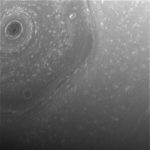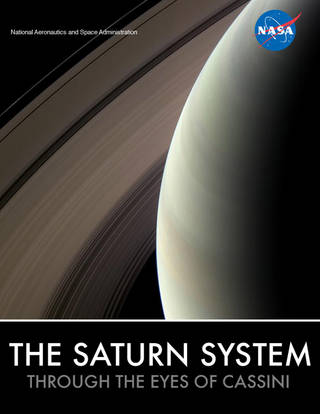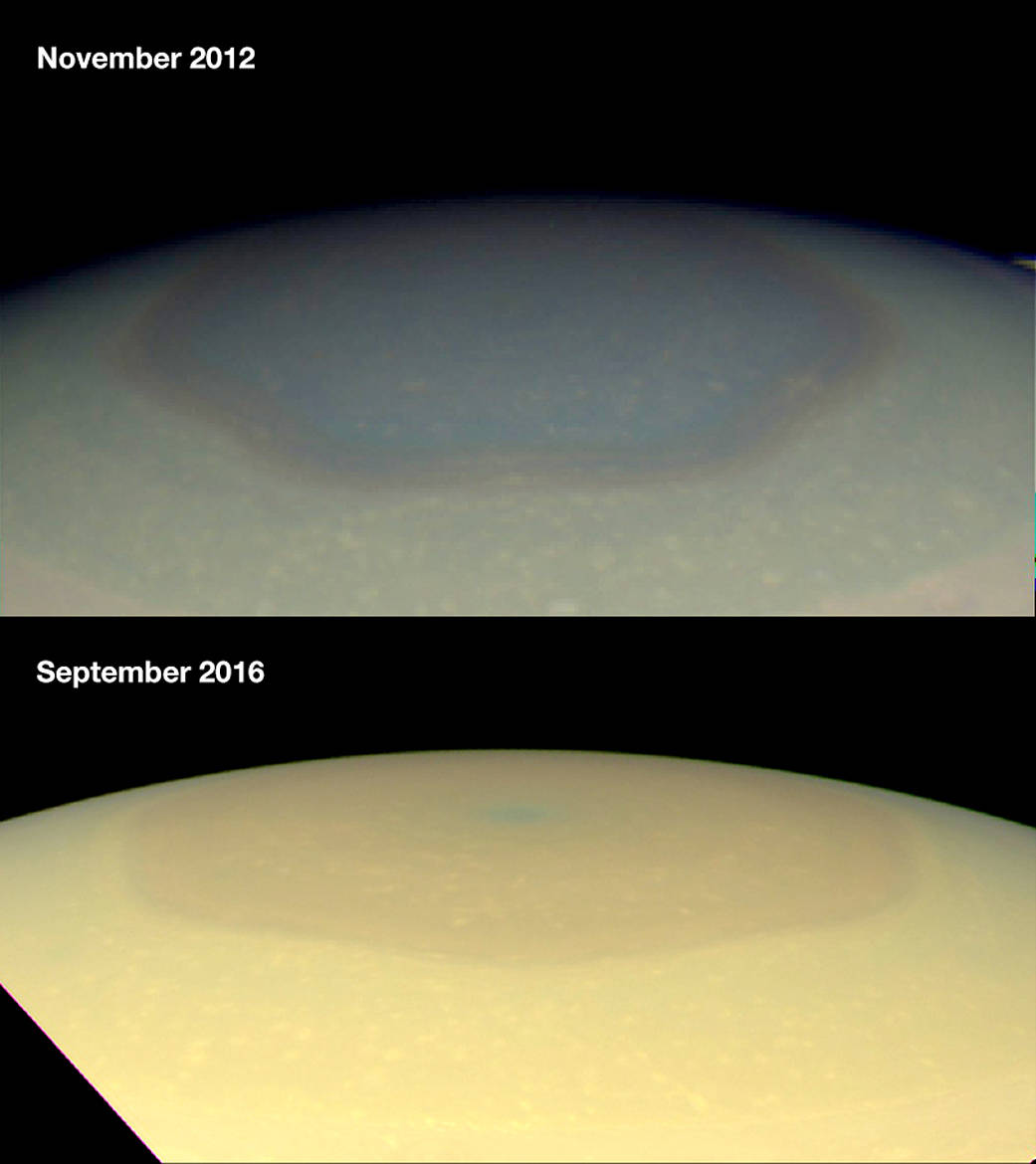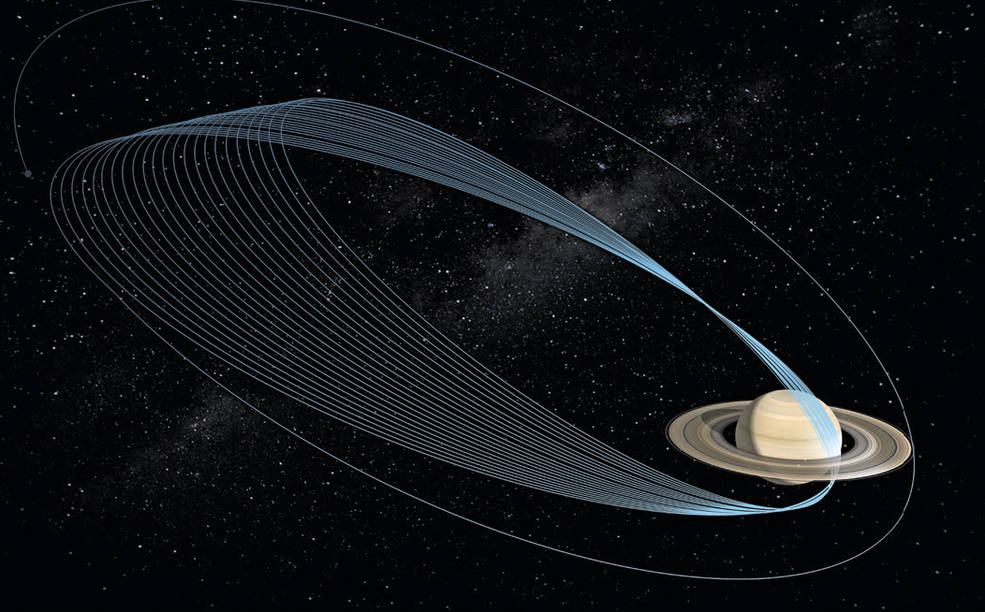This graphic shows the closest approaches of Cassini’s final two orbital phases. Ring-grazing orbits are shown in gray (at left); Grand Finale orbits are shown in blue. The orange line shows the spacecraft’s Sept. 2017 final plunge into Saturn.
Credits: NASA/JPL-Caltech
この図は、カッシーニの土星最接近の最後の2つの軌道を示しています。土星の環の外側を回る軌道はグレー(左側)で示されています。最終の軌道は青色で表示されています。オレンジ色の線は2017年9月の最後の土星への突入を示しています。

Cassini mission controllers at NASA-JPL received signals from the spacecraft early Sunday morning (PST) that the maneuvers were completed successfully.
Credits: NASA/JPL-Caltech
NASA-JPLのカッシー管制室では、日曜日の午前中(PST)にカッシーニから軌道変更が成功裏に完了したという信号を受信しました。
オリジナル記事:Cassini Makes First Ring-Grazing Plunge
NASA’s Saturn-orbiting Cassini spacecraft has made its first close dive past the outer edges of Saturn’s rings since beginning its penultimate mission phase on Nov. 30.
土星を周回するNASAの探査機カッシーニは、11月30日に最後から2番目の軌道である土星の環の外縁から土星に初めて近づきました。
Cassini crossed through the plane of Saturn’s rings on Dec. 4 at 5:09 a.m. PST (8:09 a.m. EST) at a distance of approximately 57,000 miles (91,000 kilometers) above Saturn’s cloud tops. This is the approximate location of a faint, dusty ring produced by the planet’s small moons Janus and Epimetheus, and just 6,800 miles (11,000 kilometers) from the center of Saturn’s F ring.
カッシーニは、12月4日午後5時9分PST(米国西標準時で午前8時9分)に、土星の大気上空約57,000マイル(91,000キロメートル)の距離にある土星の環の平面を通過しました。ここは土星の小さな衛星であるヤヌスとエピメテウスによって作られたかすかな塵の環の地帯であり、土星のF環の中心からちょうど6,800マイル(11,000キロメートル)の距離です。
About an hour prior to the ring-plane crossing, the spacecraft performed a short burn of its main engine that lasted about six seconds. About 30 minutes later, as it approached the ring plane, Cassini closed its canopy-like engine cover as a protective measure.
土星の環の通過の約1時間前に、カッシーニは短時間のメインエンジン噴射を約6秒おこないました。約30分後に、土星の環の平面に近づくと、カッシーニはエンジンカバーのようなキャノピーを保護するために閉じました。
“With this small adjustment to the the spacecraft’s trajectory, we’re in excellent shape to make the most of this new phase of the mission,” said Earl Maize, Cassini project manager at NASA’s Jet Propulsion Laboratory, Pasadena, California.
「この探査機の軌道に対する微調整で、今回の新たなミッションに対して最適な状態にすることができました。」と、NASAのジェット推進研究所のカッシープロジェクトマネージャーであるアール・メイズは語っています。
A few hours after the ring-plane crossing, Cassini began a complete scan across the rings with its radio science experiment to study their structure in great detail.
土星の環に近づいた数時間後に、カッシーニは電波による観測で環全体を完全にスキャンし、その構造を詳細に調べました。
“It’s taken years of planning, but now that we’re finally here, the whole Cassini team is excited to begin studying the data that come from these ring-grazing orbits,” said Linda Spilker, Cassini project scientist at JPL. “This is a remarkable time in what’s already been a thrilling journey.”
「これは何年にもわたって計画されてきましたが、今は最後の段階です。カッシーニのチーム全員が、これらの土星の環に接近する軌道からくるデータを分析することに興奮しています。」と JPLのCassiniプロジェクト科学者のリンダ・スパイカーは言います。「これはスリル満点の旅のなかでも特に注目すべきものです。」
Cassini’s imaging cameras obtained views of Saturn about two days before crossing through the ring plane, but not near the time of closest approach. The focus of this first close pass was the engine maneuver and observations by Cassini’s other science instruments. Future dives past the rings will feature some of the mission’s best views of the outer regions of the rings and small, nearby moons.
カッシーニ搭載のカメラは土星の環の平面を通過する約2日前に土星を撮影しましたが、最接近ではありませんでした。この最初の最接近は、カッシーニのエンジン制御と他の科学機器による観測でした。これから土星の環を通過する際には、土星の環の外側と近くの小さな衛星の最高の画像を見ることができることでしょう。
Each of Cassini’s orbits for the remainder of the mission will last one week. The next pass by the rings’ outer edges is planned for Dec. 11. The ring-grazing orbits — 20 in all — will continue until April 22, when the last close flyby of Saturn’s moon Titan will reshape Cassini’s flight path. With that encounter, Cassini will leap over the rings, making the first of 22 plunges through the 1,500-mile-wide (2,400-kilometer) gap between Saturn and its innermost ring on April 26.
カッシーニの残された軌道周回は1週間続きます。土星の環の外縁の次の通過は12月11日に予定されています。土星の環に接近する周回軌道(20本)は土星の衛星タイタンに最も近づく4月22日まで続き、カッシーニの軌道をもう一度変更します。その接近でカッシーニは土星の環を越え、4月26日に土星とその最っとも内側の環の間1,500マイル(2,400キロ)の隙間を22回にわたって通過します。
On Sept. 15, the mission will conclude with a final plunge into Saturn’s atmosphere. During the plunge, Cassini will transmit data on the atmosphere’s composition until its signal is lost.
そして9月15日には最終的に土星の大気に突入して終わりを告げます。急降下の間もカッシーニは、その信号が失われるまで土星の大気の組成についてのデータを送信します。
Launched in 1997, Cassini has been touring the Saturn system since arriving there in 2004 for an up-close study of the planet, its rings and moons. During its journey, Cassini has made numerous dramatic discoveries, including a global ocean with indications of hydrothermal activity within the moon Enceladus, and liquid methane seas on another moon, Titan.
1997年に打ち上げられたカッシーニは、2004年に土星に到達してから土星のシステムを観測してきました。この旅の間、カッシーニは衛星エンケラドゥスの大規模な海を含む水蒸気の噴出活動の兆候や、別の衛星タイタンの液体メタン海を含む数多くの劇的な発見をしました。
For details about Cassini’s ring-grazing orbits, visit:https://saturn.jpl.nasa.gov/news/2966/ring-grazing-orbits
The Cassini-Huygens mission is a cooperative project of NASA, ESA (European Space Agency) and the Italian Space Agency. NASA’s Jet Propulsion Laboratory, a division of Caltech in Pasadena, manages the mission for NASA’s Science Mission Directorate, Washington. JPL designed, developed and assembled the Cassini orbiter.
Last Updated: Dec. 6, 2016
Editor: Tony Greicius
訳者注:
NASAの土星探査機カッシーニもいよいよ2017年の最後の観測に向けての準備が整いつつあります。
これから2017年の4月22日まで土星の環の外縁を周回し、4月26日からは22回にわたり土星と土星の環の最内周の間を通過します。
4月22日は衛星タイタンに最接近となり、その後の観測では今まで見たことのない土星と衛星、そして土星の環のクローズアップ画像を見ることができます。
そして9月15日には土星の大気圏に突入して、音信が途絶えるまで土星大気の観測データを送り続けるとのことです。










